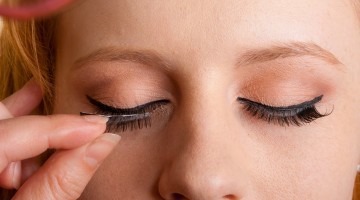We girls love to put on mascara on our eyelashes and curl them to beautify their look, we do this ritually every day to look gorgeous, but most of us do not know much about these lashes. Here we have compiled few interesting things you need to know about eye lashes.
For us, eyelashes are just a way to achieve that smokey eye effect. But they do more than just make you look good. Here are some surprising facts about eyelashes that you may not have known.
- Growth phase – eyelashes grow in three different phases: active (anagen phase), transitional (catagen phase) and resting (telogen phase). At any given time, maximum lashes are in the active phase. They grow around .16 millimetres a day. Eyelashes grow to an average of 10 millimetres in its lifespan. The growth cycle of eyelashes is just three months and around five eyelashes fall off daily. Eyelashes take around 7 to 8 weeks to grow again if you had pulled it out. However, constant pulling may cause permanent damage.
- Lifespan and composition – the lifespan of an eyelash is 200 days. A normal strand of hair on the head has a lifecycle of 135 days. For every eyelash that falls out, it takes around four to eight weeks for a new lash to come and grow to its full potential. All the eyelashes are in different phases of growth and therefore, you are never lash-less. About composition, our eyelashes are made of the same components as the hair on our head. Eyelashes are composed of 97% keratin and 3% water.
- Upper vs lower eyelashes – the hairs on the upper eye line is different than the lashes on the lower eye line. The former is much denser than the latter. We have 200 to 300 eyelashes on the upper lid but only 100 in the lower lid. The curved shape of the upper eyelashes and the way they are positioned helps to ward off moisture such as rain and sweat away from the eyes. Also, our eyelashes have their glands that produce substances that prevent the eyes from drying up and avoiding any bacterial growth. However, when they are blocked, it leads to the formation of a stye.
Read Also : CLEANING EYELASHES WITH BABY SHAMPOO
- Length of the hairs – the eyelashes are not all equal. They vary widely in length – the middle ones being longer than those in the sides. The longest eyelash measure is 6.4 centimetres.
- Protection to the eyes – just as our eyebrows, eyelashes on the lid help protect the eyes. The tiny hairs prevent water, sweat, dirt and other debris to affect our eyes. They perform the same duty as a cat’s whiskers. They serve as the first line of defence when any foreign object is trying to enter our eyes. If there is any foreign object such as small insects or dirt too close to your eyes, the lashes can feel it and tells the eyelids to shut to protect the eyes. Along with your forehead and eyebrows, the eyelashes also help to protect the eyes from the bright light of the sun. They do an excellent job of filtering out the sunlight that would otherwise harm the eyes.
- Mites in your eyelashes – ‘good’ mites lives in your eyelashes; they help remove debris and dirt and clean the hair follicles. The name of the mite that lives at the root of the eyelashes is demodex folliculorum. They keep themselves buried in the follicle. Although they do not cause any harm, when they are present in large numbers, it can cause the eyelashes to fall out. Removing your makeup every night before going to bed helps keep a check on the number of these bacteria. People who have lesser number of lashes are more likely to get painful styes; it is the mites that help keep their eyes infection-free.
- Styling tools – we have been using styling tools for eyelashes since 4000 b.c. The modern mascara, however, was created in 1913 in france.
Eyelashes are another important part of the body and considering how they work to protect the eyes, it is important to take care of them. Washing the eyelashes regularly with a baby shampoo can be beneficial. A warm compress on the eyelids at times is good too. It is natural for your lashes to thin as you age. To keep them full, however, you can include more b vitamin biotin in your diet.










